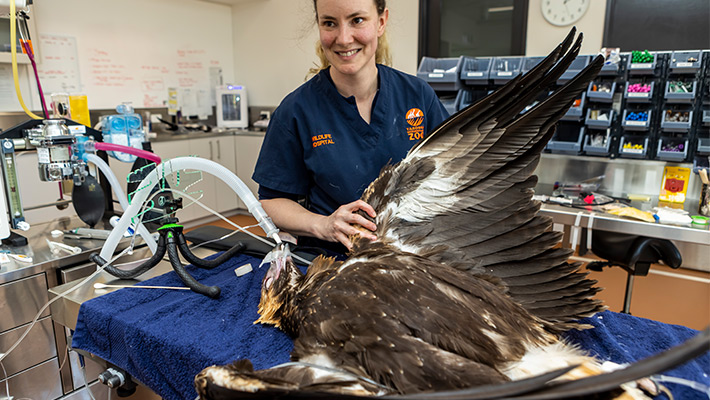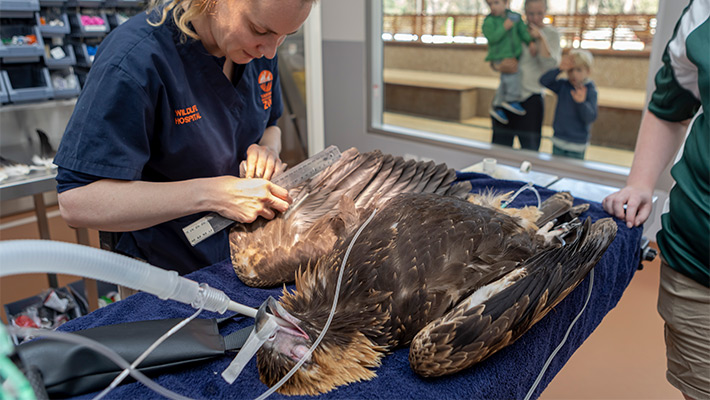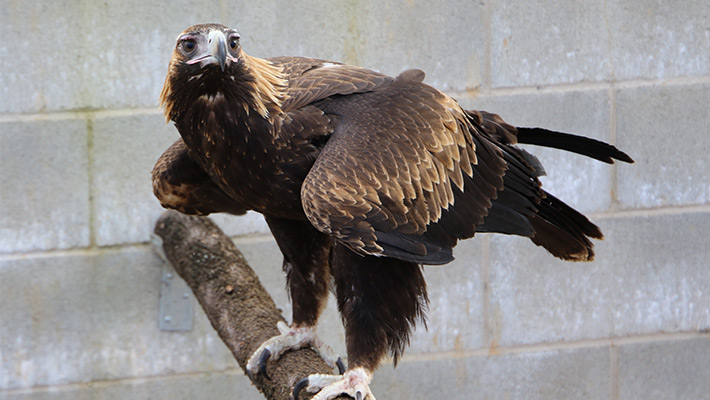Posted on 18th July 2023 by Media Relations
A feather transplant has enabled a rescued and rehabilitated Wedge-tailed Eagle to be returned to the wild near Parkes.
The bird was brought to the Wildlife Hospital at Taronga Western Plains Zoo by a wildlife carer earlier this year, having been found suffering a broken wing and several damaged feathers.
The Zoo’s veterinary team used a falconry technique that is hundreds of years old to drastically accelerate the bird’s recovery, and after two months in the care of the Wildlife Hospital team it was able to be released back into the wild near where it was found.


“The bird was found near some train tracks, and we think that it had probably been on the ground for a few weeks, because it was quite skinny,” said Taronga Western Plains Zoo Vet Dr Sarah Alexander.
“We X-rayed it and we found that it had a fractured radius, so it couldn’t fly. If it hadn’t been brought to us it wouldn’t have been able to survive out in the wild.”
The bird was anaesthetised regularly for supportive care – food, fluids and pain relief – and X-rays confirmed the bone was healing well.
Unfortunately, during the course of her injury, prior to being brought to the Wildlife Hospital, the bird had also damaged a number of her primary wing feathers. Without these wing feathers, she couldn’t fly properly, meaning she wouldn’t have been able to fend for herself in the wild.
These feathers can take up to six months to regrow naturally – too long for a wild bird of prey to stay in care at the hospital, so the Zoo’s vets performed a centuries-old technique to accelerate her recovery.
Imping.
A falconry technique that takes feathers from a deceased bird and, using glue and wooden dowel, attaches them to the wing of the recovering bird.
The procedure was a success.

After giving the bird 48 hours to adapt to her new feathers, she was flight-tested in the Wildlife Hospital’s flight aviary.
“When we tried to do that before the imping, she couldn't get any lift and she was really wonky,” Dr Alexander said.
“As soon as we put her in the tunnel, after she'd had the new feathers, she was flying straight from one end to the other.
“Twenty-four hours later she was flying back in the wild in Parkes where she was from!”
Taronga Western Plains Zoo veterinarian Sarah Alexander and veterinary nurse Katrina Burrell released the Wedge-tailed Eagle.
“She flew from the little cage that we were holding her in right up to a tree,” Dr Alexander said.
“Not only are Wedgies spectacular birds, but they also play a really important conservation and ecological role by eating pest species like rabbits.
“From a personal point of view, it’s really satisfying; here’s an animal that is really injured, really in distress and wouldn't make it without our help, to then be able to physically release it and see it flying off into the distance.”